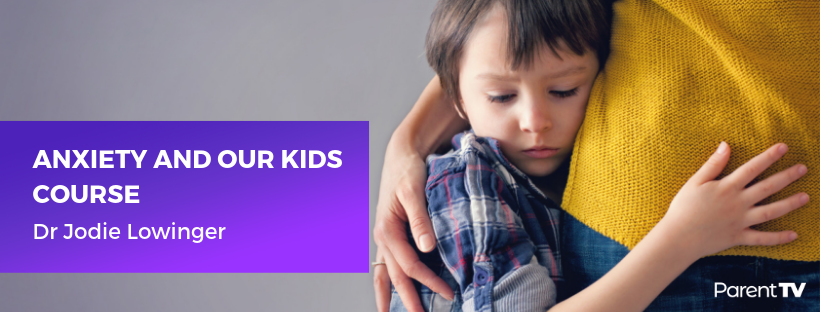Understanding Childhood Anxiety: Causes and Solutions
Categories: Mental Health
This post was written by ParentTV expert Dr Jodie Lowinger
Anxiety refers to the brain’s natural response to danger. This response to threatening stimuli is present from childhood and is healthy. When a child is frightened by something, say a thunderstorm, they may have trouble sleeping momentarily, which is perfectly normal. Anxiety becomes maladaptive when it interferes with everyday functioning.
Anxiety disorders affect both children and adults. Many children suffer from separation anxiety, social anxiety disorder, generalised anxiety, OCD or specific phobias.
Impacts of Childhood Anxiety
Approximately 10 percent of all children are diagnosed with an anxiety disorder. This affects their functioning academically, socially and personally.
At school kids with anxiety may underperform, have poorer attendance and participate less in the classroom. In social situations they may struggle to make and maintain friendships and experience disruption with their parents or siblings at home. On a personal level anxiety causes them distress and can negatively impact their self-image.
Studies have demonstrated that childhood anxiety disorders that are left untreated often progress or increase the risk of psychological disorders and depression in adulthood. Children can have any anxiety disorder an adult can have though some types, particularly separation anxiety, obsessive compulsive disorder and phobias, are more common than others.
Childhood anxiety symptoms usually appear by the age of six but can begin at anytime during childhood.
Roots of Childhood Anxiety
Similar to many psychiatric illnesses, etiological models of childhood anxiety have identified both genetic and environmental pathways as the root of childhood anxiety disorders.
Recent research suggests that genes account for 30 percent of the variance of child anxiety while shared environments (children being raised in the same home and socioeconomic status) account for 20 percent of the variance. Non-shared environments, factors that are unique to each individual, and error account for the remaining 50% of the variance in childhood anxiety disorders.
Causes of Childhood Anxiety Disorders
The following factors could contribute to childhood anxiety:
- Attachment: The quality of the parent-child bond, referred to as attachment. Children who have experienced anxiety in their caregiver relationship and have internalised it are expected to have greater difficulty coping with anxiety.
- Anxious Modelling: Parents who model anxious behaviour such as anxious thoughts, feelings or avoidant behaviours in front of their children.
- Temperament: Children who are behaviourally inhibited and approach new situations with more restraint, avoidance and distress
- Family Cohesion: This refers to the extent of interconnectedness and affiliation among family members. The extremes of both low and high cohesion have been shown to be problematic for child development. Low cohesion refers to families with estranged, emotionally disconnected relationships and children raised in such disengaged families may experience a lack of warmth and support. Conversely, very high family cohesion characterised by fused and enmeshed family relationships is associated with higher levels of parental overprotection.
- Parenting Behaviours: Specific parenting behaviours have been linked to higher levels of anxiety in children. Parental over-control or over-protection has been shown to be the strongest link to anxiety in children. These behaviours are believed to restrict children’s opportunities to experience new and challenging situations and minimising the development of mastery and confidence in the ability to cope with challenges.
- Traumatic Events: Traumatic events such as divorce, illness and death in the family.
There are many contributing factors that can lead a child to develop anxiety and here I have highlighted the main contributing factors. It is important to remember that the development of anxiety is unique to each child and family. With treatment, children with anxiety can learn to cope and live full and happy childhoods.

